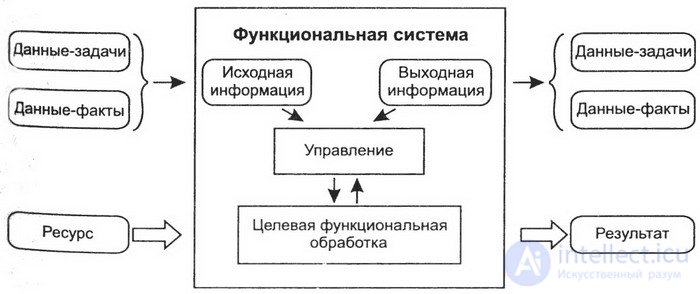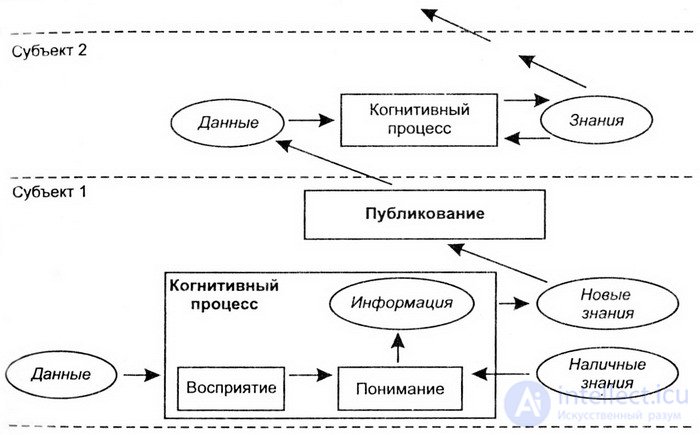Lecture
The concept of “information” is widely used in the everyday life of a modern person. The value of information in the life of society is growing rapidly, the methods of working with information are changing, the scope of information technology is expanding. The dynamism of informatics as a science is reflected in the constant emergence of new definitions and interpretations of the basic concept of informatics - information.
Most often, the term "information" is used in its original meaning (from the Latin word informatio) - this is information, reports about any event, activity, and so on. At the same time, different definitions of this concept may be introduced in various fields of knowledge.
Information in cybernetic systems is the basis for the functioning of self-governing systems (technical, biological, social), and it is considered as an indication of the content of a signal received by the system from the outside world in the process of interaction of the system with it (N. Wiener).
The unifying (at least from a philosophical point of view) definition is the following: “Information is the reflected diversity” (A. D. Ursul). Diversity and reflection in the developing material world are inextricably linked and mutually define each other: the higher the internal diversity of the system, the more adequately it reflects the external world. The higher the possibilities of reflection (perception and understanding of interaction with the environment), the more the system has the capacity to adapt - to develop and increase its diversity (the principle of the necessary diversity).
Let us dwell on the concept of “data”, which, for example, is introduced as follows: “We live in the material world. Everything that surrounds us and what we encounter relates to either physical bodies or physical fields. All objects are in a state of continuous movement and change, which is accompanied by the exchange of energy and its transition from one form to another. All types of energy exchange are accompanied by the appearance of signals. When signals interact with physical bodies, certain changes in properties occur in the latter - this phenomenon is called signal registration. Such changes can be observed, measured or recorded in one way or another - in this case new signals appear and are recorded, that is, data is generated. ”
This definition accepts the primacy and objectivity of the existence of data, including independence from the subject using them. But if the existence of data does not depend on whether they will ever be used or not, the efficiency of functioning of many processes (having a control loop) depends on the data. For example, the data used to change the behavior of the process based on the construction of the forecast (that is, the facts characterizing previous states) will help optimize the receipt of the final result, and will already act as control information . The role and nature of the data used is generally reflected in a generalized diagram of the managed functional process.
 A generic diagram of the data-driven functional process
A generic diagram of the data-driven functional process The resource conversion system, the functionality of which is conditioned by the problem context (data representing the target task), actually transforms the information. Potentially useful data extracted from a common set in accordance with the context of the task (initial information) as a result of use generates output information — updated data confirming or denying the effectiveness of the selected initial data for solving the problem.
Turning to the consideration of the role of the concept of “information” in man-machine complexes used in cognitive, social and production systems, it is necessary to define more fully the concept of “knowledge”.
The concept of "knowledge" can be defined as follows: "Scientific knowledge is the totality of information that is the result of the reflection of material and non-material reality in the human mind" (Ursul AD).
On the other hand, it is argued that “ scientific and technical information is documented scientific knowledge entered into circulation, participating in the functioning and development of society” (Muranivsky T. V.). That is, knowledge that is the property of someone's consciousness and not received a “push” for circulation in society cannot be considered as information.
Based on this, we can state the conventionality of turning knowledge into information and information into knowledge. Information acts as a form of knowledge, alienated from its carrier (the consciousness of the subject), and socializing it for general use: information is a dynamic form of the existence of knowledge, ensuring its dissemination and effectiveness (application). Receiving information, the user transforms it by intellectual assimilation (information-cognitive process) into his new personal knowledge, that is, knowledge is being recreated based on information.
Accordingly, it can be said that at the initial stage, knowledge is data that is actualized by the subject , a feature of which is that they cannot be used without the participation of the subject himself.
The results of solving problems (usually “subjectivized”), generalizations in the form of laws, theories, sets of views and ideas, acting as true, verified information, alienated from the subject that formed them, form socialized knowledge. Presented usually in the form of documents and messages, they, in turn, can be considered as objectively existing data.
The functional relationship of these concepts is illustrated by a scheme where the cognitive process is considered as an integral part of any creative, both creative and production process, implying the possibility of forecasting and management.
 Value concepts "information", "data", "knowledge"
Value concepts "information", "data", "knowledge" Whether data will become information depends on whether the method of transforming (reflecting) data into new or already known concepts is known. That is, to extract information from data, it is necessary to have a method of obtaining information that is adequate to the form of data presentation. Moreover, it is necessary to take into account the fact that information is not a static object - it is dynamic and exists only at the moment of interaction of data and methods. It can be said that all the other time it is in a “potential” state and is presented as data.
In addition, the same data may provide different information depending on the degree of adequacy of the methods interacting with them, to which the conditions for its extraction (for example, the existing knowledge of the subject) must also be attributed.
Thus, unlike data that is objective in nature (since it is the result of recording objectively existing signals caused by changes in material bodies or fields), the methods are subjective in the sense that they are created or selected and then used purposefully for solving practically significant tasks of a specific subject. The basis of the created (artificial) methods are the algorithms (ordered sequences of commands) compiled and prepared by the subjects (people), and the natural methods are based on the biological properties of the subjects. Accordingly, information arises and exists at the moment of interaction of objective data and subjective methods.
The basic concepts used in economic informatics include: data, information and knowledge. These concepts are often used as synonyms, but there are fundamental differences between these concepts.
The term data comes from the word data - fact, and information (informatio) means an explanation, a statement, i.e. information or message.
Data is a collection of information recorded on a particular medium in a form suitable for permanent storage, transmission and processing. Conversion and data processing provides information.
Information is the result of data conversion and analysis. Information differs from data in that data is fixed information about events and events that are stored on certain media, and information appears as a result of data processing in solving specific problems. For example, various data is stored in databases, and on a specific request, the database management system provides the required information.
There are also other definitions of information, for example, information is information about objects and phenomena of the environment, their parameters, properties and condition, which reduce the degree of uncertainty about them, incompleteness of knowledge.
Knowledge is recorded and verified by practice processed information that has been used and can be reused for decision making.
Knowledge is a type of information that is stored in the knowledge base and displays the knowledge of a specialist in a particular subject area. Knowledge is intellectual capital.
Formal knowledge can be in the form of documents (standards, standards) governing decision-making or textbooks, instructions describing problem solving.
Informal knowledge is the knowledge and experience of specialists in a particular subject area.
It should be noted that there are no universal definitions of these concepts (data, information, knowledge), they are interpreted differently.
Decisions are made on the basis of the information received and the available knowledge.
Decision making is the choice of the best in a certain way solution from the set of permissible decisions based on the available information.
The relationship of data, information and knowledge in the decision-making process is shown in the figure.

To solve the problem, the fixed data is processed on the basis of the available knowledge, then the obtained information is analyzed using the available knowledge. Based on the analysis, all feasible solutions are proposed, and as a result of the choice one best decision is made in a certain sense. The results of the decision add knowledge.
Depending on the sphere of use, the information may be different: scientific, technical, managerial, economic, etc. For economic informatics interest is economic information.
Signs of knowledge
Requirements for information units (IE) according to which the data
turn into knowledge:
- internal interpretability
- structuredness
- connectivity.
- semantic metric
- activity
Internal Interpretability. IE must have a unique name,
on which IP finds it.
Structured. IE should have a flexible structure (recursive
nesting).
Connectivity Between IE should establish relationships of the following types:
- structuring relationships that define the hierarchy of IE;
- functional relationships that allow to calculate the IE;
- causal relations, causal relationships;
- semantic relationships - everything else.
Semantic metric. Sets the relationship of situational proximity
(relevance) between IE
Activity. Execution of procedures in the IP should be initiated by the current
state of the information base
Comments
To leave a comment
Data mining
Terms: Data mining